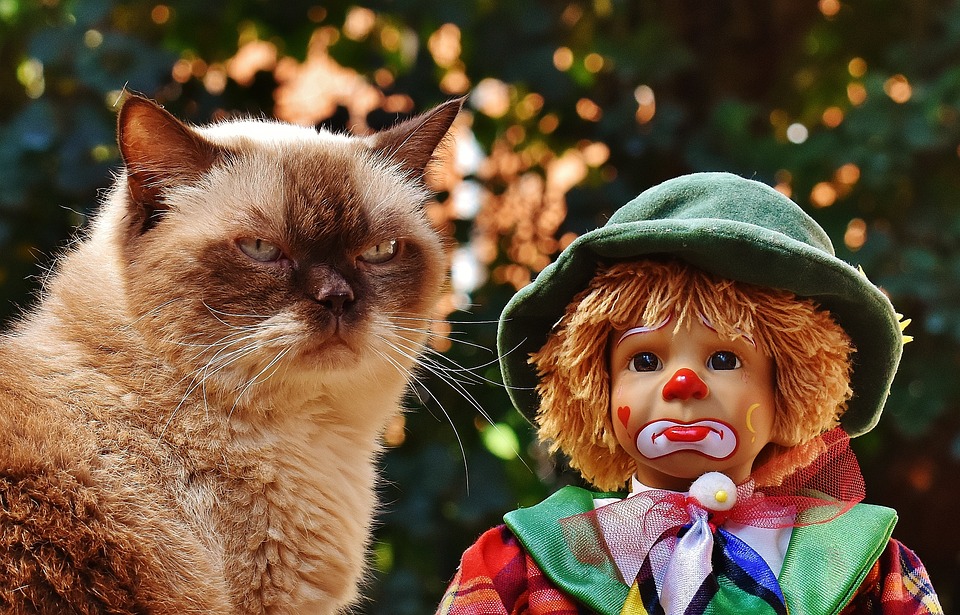Excessive grooming of toys by cats may seem harmless at first, but it can lead to various health issues if left unchecked. Understanding why cats groom their toys excessively and recognizing the signs of this behavior is crucial in managing it effectively. In this article, we will explore the fascination cats have with grooming toys, the potential risks of excessive grooming, and provide tips for managing this behavior.
Heading 1: The Fascination Cats Have with Grooming Toys
Cats have natural instincts that drive them to groom themselves regularly. Grooming helps them keep clean, maintain healthy fur, and regulate body temperature. Grooming toys provide a similar satisfaction for cats, allowing them to engage in this instinctive behavior even when they don’t need to groom themselves.
Toys play a significant role in a cat’s life as they provide mental and physical stimulation. They mimic prey and allow cats to engage in hunting behaviors, which is essential for their overall well-being.
Heading 2: Recognizing Excessive Grooming Behavior in Cats
Excessive grooming is characterized by repetitive and prolonged licking, biting, or chewing of toys. If your cat spends an excessive amount of time engaging in this behavior or shows signs of distress when unable to groom toys, it may be considered excessive.
Possible reasons for excessive grooming of toys include anxiety, boredom, or even obsessive-compulsive disorder. Cats may also resort to excessive grooming if they are experiencing discomfort or skin irritations.
Heading 3: Understanding the Potential Risks of Excessive Grooming
While grooming is a normal behavior for cats, excessive grooming of toys can lead to various health issues. These include:
1. Hairballs and Digestive Issues: Excessive grooming can result in the ingestion of a significant amount of fur, leading to the formation of hairballs. This can cause digestive problems and discomfort for your cat.
2. Dental Problems: Constant biting and chewing of toys can wear down your cat’s teeth, leading to dental issues such as tooth decay or gum disease.
3. Skin Irritation and Infections: Excessive grooming can irritate the skin and lead to inflammation or even open wounds. This can create a breeding ground for infections, which can be painful and require veterinary intervention.
Heading 4: Tips for Managing Excessive Grooming Behavior
To manage excessive grooming behavior in cats, consider the following tips:
1. Providing Adequate Mental and Physical Stimulation: Ensure your cat receives sufficient playtime and interaction to keep them mentally and physically stimulated. Engage in interactive play sessions using toys that mimic hunting behaviors.
2. Rotating Toys to Maintain Interest: Cats can quickly lose interest in toys if they are always available. Rotate their toys regularly to keep them engaged and prevent excessive focus on a specific toy.
3. Encouraging Playtime with Interactive Toys: Interactive toys that require mental challenges, such as puzzle feeders or treat-dispensing toys, can keep your cat entertained and distract them from excessive grooming.
FAQs:
1. Why do cats groom their toys excessively?
Cats have a natural instinct to groom themselves as a way to keep clean and maintain their fur. Grooming toys may provide a similar satisfaction for them.
2. How can I identify if my cat’s toy grooming is excessive?
Excessive grooming is often characterized by repetitive and prolonged licking, biting, or chewing of toys. If your cat spends an excessive amount of time on this behavior or exhibits signs of distress when unable to groom toys, it may be considered excessive.
3. Are there any risks associated with excessive grooming of toys?
Excessive grooming of toys can lead to various health issues, including hairballs, digestive problems, dental issues, and skin irritation or infections.
4. How can I manage excessive grooming behavior in my cat?
Ensure your cat receives sufficient mental and physical stimulation through playtime and interaction. Rotate toys regularly to keep their interest. Consider providing interactive toys that offer mental challenges.
5. Should I discourage my cat from grooming toys altogether?
While excessive grooming may pose risks, grooming toys can offer mental stimulation and help fulfill your cat’s natural instincts. Instead, focus on managing the behavior and ensuring it doesn’t become obsessive or harmful.
Conclusion:
Balancing your cat’s love for grooming toys is essential for their overall well-being. Understanding the reasons behind excessive grooming, recognizing the signs, and implementing management strategies will help ensure that your cat enjoys the benefits of toy grooming without facing any health risks. By providing adequate mental and physical stimulation and monitoring their behavior, you can keep your cat happy, healthy, and engaged with their favorite toys.








